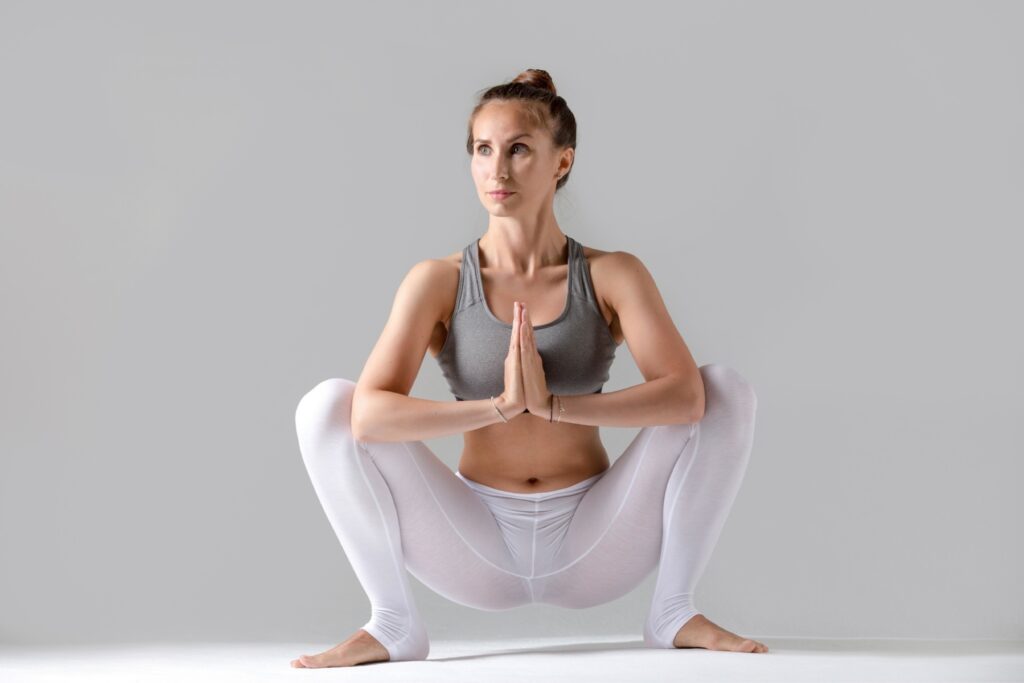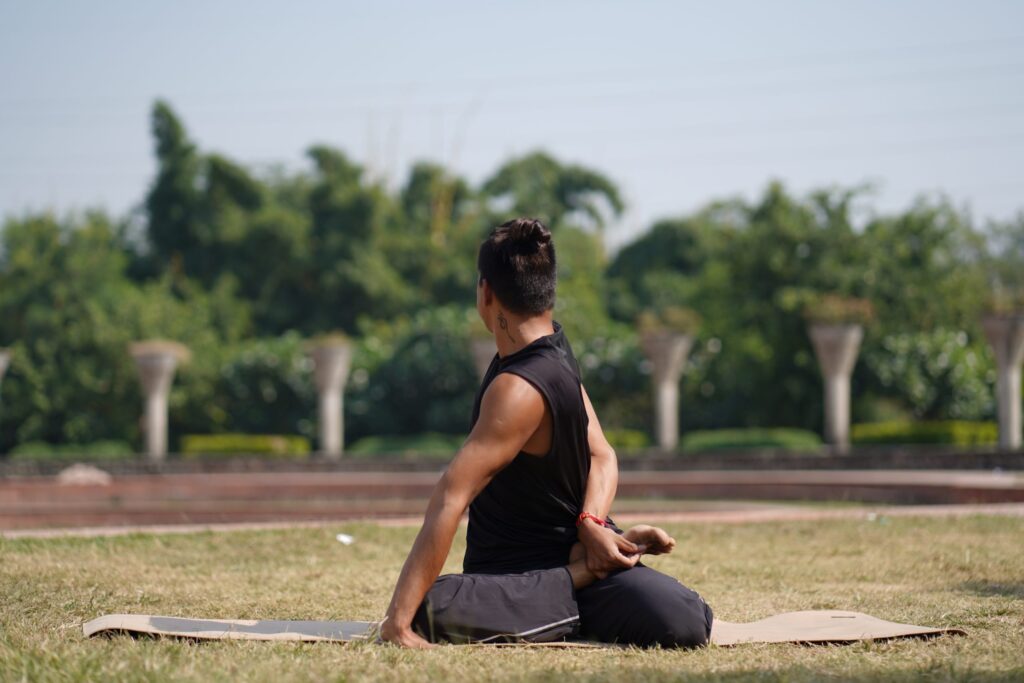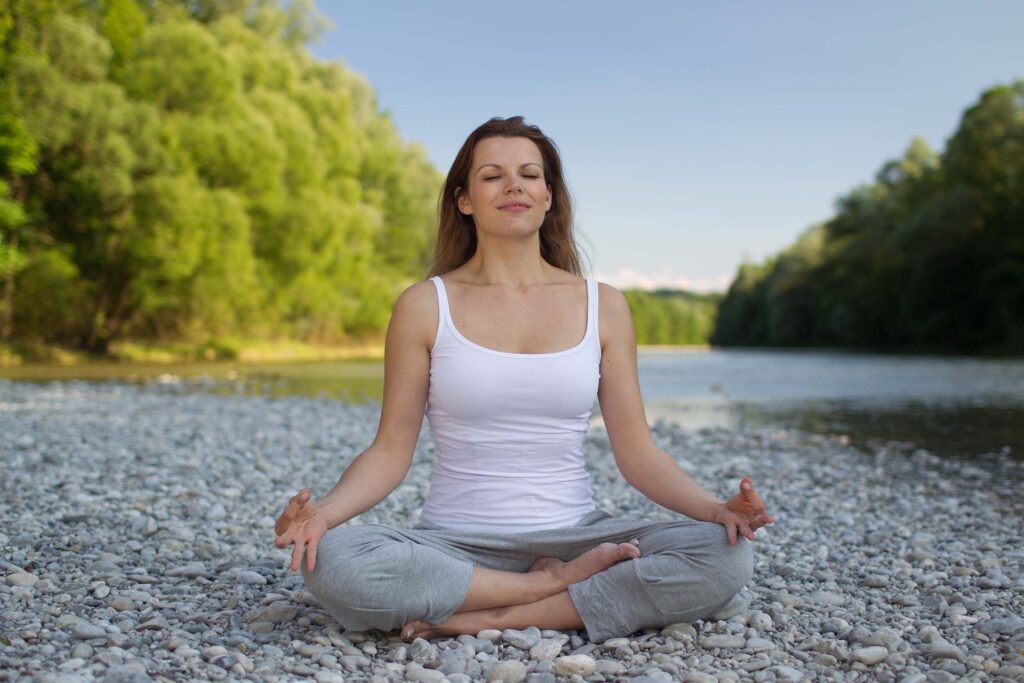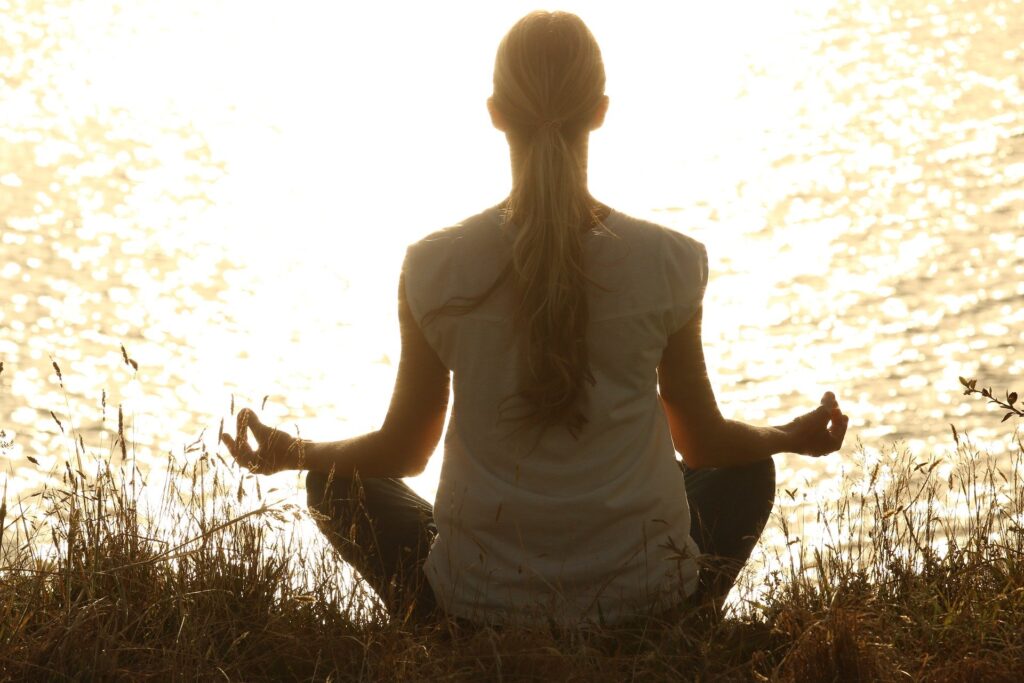Malasana ( मालासन ) is often known by different names ‘Necklace pose‘, ‘Garland pose’ and ‘Wide Squat pose‘. This pose is a part of Hatha yoga that promotes a healthy mind-body coordination and offers great stretching of ankles, groins, back etc. Here, we’ll discuss various such benefits, steps and precautions for performing Malasana.
The Sanskrit name, ‘Malasana‘ ( मालासन ) is the combination of two words ‘Mala’ ( माला ) meaning ‘Garland or ‘Necklace‘ & ‘Asana‘ ( आसन ) means ‘pose‘ or ‘seat’ In this asana, one need to start with squat position bringing hands close to the heart. As you practice this yogic squat pose, your body resembles the shape of a garland or necklace.
According to ancient Indian text of Sritattvanidhi, Malasana is one of the best hip opening exercise. Many people in many South Asian countries, sit in this squat pose while defecating, praying and working on a farmland. This asana helps in strengthening the hamstrings, lower back, quadriceps, calf muscles, and gluteal of the legs.
Malasana is often known as “Upavesasana” that works to improve the mobility in our hips and back. It cures wide range of health problems caused due to inactive lifestyle. In Western culture, however, we hardly find someone in a full squat outside of the gym. in cars, at desks. This pose improves body posture, hunched back & shoulders.
How to practice Malasana – The Garland Pose
According to Ayurvedic text, ‘Mala‘ means ‘waste products‘. The three main kinds of waste – 1. feces, 2. urine and 3. sweat.
To get the maximum benefits follow the below mentioned step – by – step guide to perform Malasana ( The Garland Pose ):
Step 1:
- Stand in a Tadasana (Mountain Pose) with your arms at your sides. Keep your feet wide apart on the yoga mat.
Step 2:
- Bend your knees & lower the hips to the floor to come into a squat position. Separate thighs wider than torso.
Step 3:
- Lean forward and bring both of your arms to the inside of the bent knees, place them wider than your torso.
Step 4:
- Press elbows against the knees and fold hands together in front of heart in Anjali mudra (Namaskar Mudra).
Step 5:
- Breathe out and separate both the knees as you bend forward. Then pull your palms down in front of the chest.
Step 6:
- During the practice of this pose, keep your torso stretched, shoulders relaxed & forearms parallel to the floor.
Step 7:
- Hold your lower legs (Ankles). Bend your knees and lower your hips towards the heels, coming into a squat.
Step 8:
- Press your shin and transfer all your body weight into your heels. Stay in the posture for about 4-5 breaths.
Step 9:
- To release the garland pose, bring fingertips to the floor and straighten legs come directly into a Forward Fold.
Modifications and Variations
To deepen experience during Malasana, try these following modifications and find a variation that works well for you :
Three main variations of Malasana – The Garland Pose are Upavesasana, Kanchyasna and Bhujpidasana Marichyasana.
1. Relieves Lower Back Pain
- Place a folded blanket in front of your thighs and bring your palms forward as you extend your lumbar spine.
- You may extend inverse hand towards the sky and if your heels lift as you bend, support them with a blanket.
2. To Keep A Better Balance
- In this wide squat position, if your heels don’t touch the ground, place them on a folded blanket or yoga block.
- Practitioners at beginner level & pregnant women can practice this pose against a wall or use a chair for support.
3. To Make Pose More Intense
- Advanced level students can bring their arms forward, dropping torso between legs and the forehead to the mat.
- For intense stretching, extend arms behind the body to clasp heels, bend elbows & bring shins into the armpits.
Health benefits of Malasana – The Garland Pose
The powerful calming and spiritual effects of Squat pose makes it easier to hold body in seated meditation for long.
Following are The Top 7 Health Benefits of Malasana (The Garland Pose), that you may attain with regular practice :.
1. Malasana strengthen Bones & Muscles
- The Squatting pose of Malasana strengthens both Mansa Dhatu (muscle tissue) and Asthi Dhatu (bones).
- Plus, it provides a good stretch to thighs, lower back, sacrum, groin. ankles, hamstrings, neck, hips and torso.
Also Read :
2. Malasana improves Digestion
- The regular practice of Malasana not only improves digestion & metabolism but it also relieves constipation.
- It also tones abdominal muscles & improves function of the colon to help with elimination of waste products.
Also Read :
3. Malasana invigorates Chakras
- Malasana helps in balancing Mooladhara (Pelvic) chakra that relieves constipation and cleanses body system.
- It also energizes Swadhishtan (Sacral) chakra that governs flow of creativity, reproductive and sensual energy.
Also Read :
4. Malasana improves Body Posture
- Garland pose opens your hips, pelvis, groins and outer hips that improves mobility and stability of these organs.
- Apart from correcting body posture, it also helps to prevent hernia, relieve bone stiffness and reduce belly fat,
Also Read :
5. Malasana is helpful for Pregnant Women
- Malasana is helpful for natural delivery, PCOD and Endometriosis by increasing the blood flow in the pelvis area.
- It’s one of the best prenatal yoga that reduces the risk of women from getting diabetic during their pregnancy.
Also Read :
6. Malasana balances Saman and Apan Vayu
- Malasana restores saman vayu & pachak pitta that improves digestive fire and strengthens abdominal organs.
- Moreover, it also taps apan vayu ( downward flowing energy ), that assits proper excretion of feces and urine.
Also Read :
7. Malasana improves psychological health
- The regular practice of this squat position improves focus, concentration, sleeping pattern and bodily balance.
- By unlocking hips, it helps to release the pent–up emotions that further reduces stress and negative feelings.
Also Read :
Precautions and contradictions
Although the practice of Malasana is generally considered to safe for all, yet keep following things in mind as you start doing this asana.
- Avoid if you have any chronic knee, ankle, spine or low back injury.
- During pregnancy, consult doctor or yoga teacher before doing pose.
- Avoid if you have undergone through any recent abdominal surgery.
- People suffering from Hernia should avoid the practice of Malasana.
- Always practice asanas within your own range of limits and abilities.
Preparatory Poses
- Baddha Konasana
- Upavistha Konasana
- Virasana
Follow-up Poses
- Uttanasana
- Adho Mukha Svanasana
- Bhujangasana
- Bakasana
Tips for Beginners
Keep the following information in your mind before you start practicing Malasana – The Garland Pose :
- Let your movements slow and smooth. Avoid jerking, pushing, pulling or forcing any movement in this pose.
- Practice Garland pose empty stomach. Have your about meal 4-6 hours before you start practicing this pose.
- If you’ve any medical concerns, consult doctor & practice it under the supervision of an certified yoga teacher.
Conclusion
Malasana is a grounding pose that connect us with Earth element ( Pritivi Tatwa ). This pose aids in hip opening, as sitting for long periods can tighten inner thighs, groin and hip flexors that may lead to poor posture.
We really hope that this blog would be useful guide for your practice of Malasana. We would like to invite you to please do share your views, thoughts and suggestions on this blog in the comment section below.
Also read :
FAQs Related to Malasana and its Health Benefits
Can women practice Malasana during their pregnancy ?
Yes, Malasana is one of the best asana for women during their pregnancy as it improves posture, mood and stability. This squat pose not only cures lower back pain and constipation but it also provides good stretching to thighs, groins, ankles. Plus, it opens pelvis region that would help in childbirth eventually.
Can menstruating women do Malasana pose ?
Malasana is a great hip opening exercise that relieves menstrual cramps and promotes healthy bowel movements. This asana increases mobility and strengthens of hips, legs and pelvic region. However, it is advisable, this pose should be practiced under the guidance of yoga teacher during menstruation.
Is squatting pose better than sitting on the western toilet ?
Squatting pose is by far the best poop position as it aids to clear colon, reduces the risk of constipation and ensures smooth passage of stool. It may seems to be unhygienic or unhealthy, but it is the better option when compared with sitting western style toilets. The latter may invite many health issues.
What are the challenges you may face while doing Malasana for first time ?
Beginners may face difficulty while practicing Malasana due to tight hips, unsteady heels, curved spine, stiff knees, tension in sacral region, and shoulders.





Hey there, You have done a fantastic job. I will certainly digg it and personally suggest to my friends. I am sure they’ll be benefited from this website.